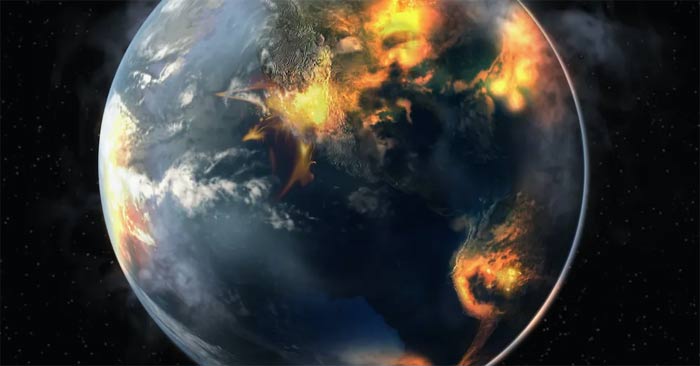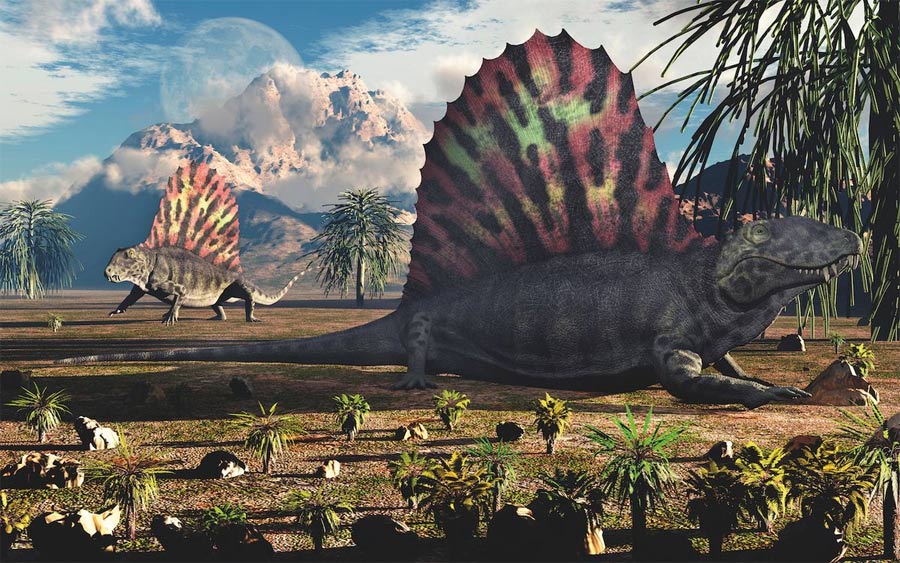5 mass extinctions that shaped the Earth and the 6th is happening now
The dinosaur extinction was just one of five global events that wiped out millions of species. How did these events happen? And how can we prevent them from happening again?

Over the past 10,000 years, Earth has undergone a mass extinction, rapidly wiping out animal species from our planet.
Scientists define a mass extinction as the extinction of about three-quarters of all species in a short geological time period, i.e. less than 2.8 million years, according to The Conversation. Humans are currently at the beginning of the latest mass extinction, which is happening much faster than any other. Since 1970, vertebrate populations have declined by an average of 68%, and more than 35,000 species are now considered threatened with extinction, according to the International Union for Conservation of Nature (IUCN). In the 20th century alone, 543 terrestrial vertebrate species went extinct, according to a research paper in the journal PNAS.
Are humans the cause of mass extinction?
Since the industrial revolution unleashed pollutants in 1760, humans have been the primary cause of Earth's current environmental crisis. From greenhouse gas emissions and ozone depletion to deforestation, plastic waste and illegal wildlife trade, humans have actively deprived some of the world's species of life and threatened many more.
There are those who argue that climate change and species extinction are a natural part of life, and in some ways that is true. After all, the first five mass extinctions occurred without humans. What is different, however, is the speed at which these mass extinctions occurred.
The fossil record tells us not only what creatures existed before humans, but also how long a species could have existed naturally without human intervention before going extinct. This is known as the background rate, and it equates to about one extinction per 1 million species per year. Today, due to human activity, the background rate is actually tens of thousands of times higher, meaning species are going extinct much faster than they would have otherwise. According to a study published in the journal Science Advances, studies have found that some species that have disappeared from Earth could have continued to exist for 800 to 10,000 years without human intervention.

5 mass extinctions that shaped the Earth today
Ordovician-Silurian mass extinction: ~440 million years ago
Extinct species: 85%
Earth's first mass extinction occurred at a time when creatures like corals and shelled brachiopods filled the world's shallow waters but had yet to invade land. Life itself began to spread and diversify, first appearing around 3.7 billion years ago. But around 440 million years ago, a climate change caused ocean temperatures to change. Most ocean life died out.
At the end of the Ordovician period, a rapid mass glaciation covered the southern supercontinent, Gondwana. According to a study published in the journal Oceanology, glaciation on this scale locked away much of the world's water, while also significantly lowering global sea levels, depriving many species of vital habitat, disrupting food chains, and reducing fertility.
End-Devonian mass extinction: ~365 million years ago
Number of species extinct: 75%
Often referred to as the 'age of fish,' the Devonian saw the rise and fall of many prehistoric marine species. Although animals had begun to evolve on land by this time, most life still swam in the oceans. That was until vascular plants, such as trees and flowers, likely caused the second mass extinction, according to a 1995 study published in the journal GSA Today.
As the plants grew roots, they inadvertently transformed the land they lived in, turning rocks and rubble into soil. This nutrient-rich soil then spilled into the world's oceans, causing algae to bloom on a massive scale. These blooms essentially created giant " dead zones " where algae sucked up all the oxygen in the water, suffocating marine life and wreaking havoc on the marine food chain. Species unable to adapt to the reduced oxygen and lack of food died off.
However, this hypothesis is still debated, and some scientists believe that volcanic eruptions were responsible for the drop in oxygen levels in the oceans, according to a study in the journal Geology.
Permian-Triassic mass extinction: ~253 million years ago
Extinct species: 96% of marine life; 70% of terrestrial life
This was the largest mass extinction ever to occur on Earth. It wiped out about 90% of all species on the planet, and wiped out land-dwelling reptiles, insects, and amphibians. It was caused by volcanic activity. At the end of the Permian period, a volcanic eruption occurred in what we now call Siberia. This released a huge amount of carbon dioxide into the atmosphere, causing a greenhouse effect that warmed the planet. As a result, weather patterns changed, sea levels rose, and acid rain fell on land.
According to the Sam Noble Museum in Oklahoma, rising levels of carbon dioxide dissolved into the ocean, poisoning marine life and depriving them of oxygen-rich water. At the time, the world consisted of a supercontinent called Pangaea, which some scientists believe contributed to the lack of movement in the world's oceans, creating a global stagnant pool of water that only allowed carbon dioxide to accumulate. Rising ocean temperatures also reduced oxygen levels in the water.
Corals are a group of marine creatures that have been among the hardest hit — it took 14 million years for ocean reefs to recover to their former glory.
Triassic-Jurassic mass extinction: about 201 million years ago
Number of extinct species: 80%
The Triassic period saw an explosion of new and diverse life, and dinosaurs began to flourish across the globe. Unfortunately, many volcanoes also erupted at this time. While it's still unclear exactly why this fourth mass extinction occurred, scientists believe that massive volcanic activity occurred in an area of the world now covered by the Atlantic Ocean, according to MIT News. Similar to the Permian extinction event, the volcanoes released large amounts of carbon dioxide, causing climate change that devastated life on Earth. Global temperatures rose, ice melted, and sea levels rose and became more acidic. As a result, many marine and terrestrial species became extinct; including large prehistoric crocodiles and some pterosaurs.
K-Pg extinction event: ~66 million years ago
Number of species extinct: 75%
The most famous mass extinction event is the Cretaceous-Paleogene period - also known as the day the dinosaurs died out. This event is sometimes called the KT extinction event, and geologists refer to it as the 'K-Pg extinction event' because the letter 'C' stands for an earlier geological period called the Cambrian. The 'K' comes from the German word 'Kreide', which means 'Cretaceous'.
After impacting what is now Yucatán, Mexico, an asteroid measuring more than 13 kilometers wide slammed into Earth at a speed of about 72,000 kilometers per hour. It created a crater 180 kilometers wide and 19 kilometers deep, called the Chicxulub crater. The impact incinerated all surrounding land for 1,450 kilometers and ended the 180 million-year reign of dinosaurs on Earth.
After the impact, the sky was pitch black for months as debris and dust were thrown into the atmosphere. This prevented plants from absorbing sunlight, which caused a mass die-off and disrupted the dinosaurs' food chain. It also caused global temperatures to plummet, plunging the world into a long, cold winter. Scientists estimate that most of the extinctions on Earth at that time would have occurred within months of the impact. However, many species that could fly, burrow, or dive to the bottom of the ocean survived. For example, the only true descendants of dinosaurs alive today are modern birds—more than 10,000 species are thought to have descended from those that survived the impact.

Humans may be the driving force behind this accelerating extinction, but we are also the answer to stopping it. The world is filled with scientists, conservationists, and environmentalists working in labs, on reserves, and in the political arena to protect endangered species.
You should read it
- Review Second Extinction Early Access - Revenge Dinosaur
- Human ancestors caused the extinction of animals 4 million years ago
- 'Falling' with the reason why birds don't have teeth
- What are the consequences of the extinction of large mammals in North America?
- Climate change puts bees at risk of extinction, but it's not too late for humanity to save them and save themselves
- Decipher the mystery of the extinction that destroyed 96% of marine life
 What would happen if the Earth's oceans disappeared?
What would happen if the Earth's oceans disappeared? How Alien Life Exists Without Water
How Alien Life Exists Without Water What you need to know about the mysterious black hole in the Indian Ocean
What you need to know about the mysterious black hole in the Indian Ocean How Japan turns footsteps into electricity?
How Japan turns footsteps into electricity? The complex psychological mysteries of the mind
The complex psychological mysteries of the mind The strangest maritime mysteries, still unsolved
The strangest maritime mysteries, still unsolved